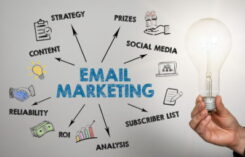Contents
One of the most sincere ways to communicate with your customers one-on-one in the digital world is through an email marketing strategy. Every email that falls into your inbox is the voice of your brand, the introduction of your product, and the opportunity to provide content that adds value to the user. As you can appreciate, in the ever-evolving world of digital marketing, it is of great importance for brands to communicate effectively with their target audiences.
At this point, despite the misconceptions that email marketing is an outdated method, it still stands out as one of the most powerful and direct communication channels. When implemented with the right strategies by experts, it offers unique opportunities to capture potential customers, strengthen ties with existing customers, create brand loyalty, and ultimately increase conversions.
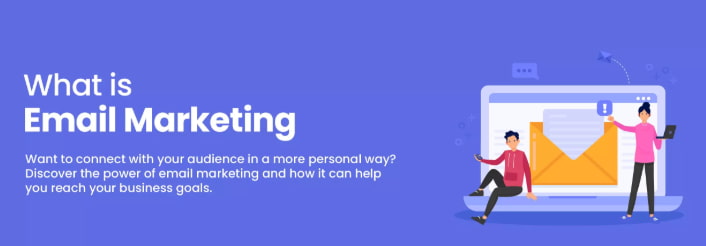
In today’s competitive market, email marketing is not just a communication tool for businesses, just like content marketing and social media marketing, but also a strategic investment that allows them to achieve measurable results.
The success of email marketing today is based on the use of advanced techniques such as personalization and segmentation. Instead of mass and general emails, it is now possible to send content tailored to subscribers’ interests, behaviors, and demographics. With AI-powered automation tools, engagement rates and ROI can be significantly increased by ensuring that the right message reaches the right person at the right time. This dynamic structure makes email marketing an indispensable growth engine for businesses.
However, without the right strategy and tools, the emails you send will either be deleted without being read or will get lost in the spam folder. In this article, we will cover everything from the basics of email marketing to advanced tactics in a friendly language for both beginners and experienced marketers.
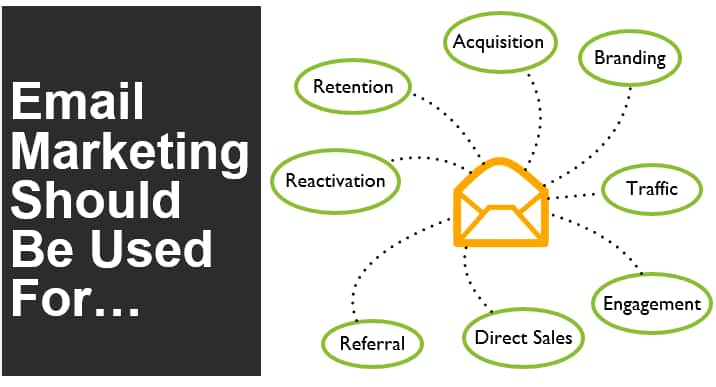
What Is Email Marketing? The Cornerstones!
The success of email marketing is based on a strategy built on solid foundations. The first and most important of these cornerstones is to create a qualified email list. A list where users subscribe with their own consent, based on the principle of permission-based marketing, ensures that emails sent have higher open and click rates.
The quality of the list is much more valuable than its quantity. The segmentation step that comes after creating this list involves dividing subscribers into groups based on their interests, demographic information or behavioral data. Proper segmentation allows for more relevant and personalized messages to be sent, keeping subscribers engaged and improving overall campaign performance.
Other critical components of email marketing include creating compelling content and using strong calls to action (CTAs). The content of emails should be designed to be informative, valuable and capture the reader’s attention. Clear and visible CTAs that serve the purpose of the content direct the subscriber to the desired action; this could be a website visit, a product purchase or a resource download.
If we briefly list this topic:
- Target Audience and List Creation: Your email list is your most valuable asset. You can increase your number of voluntary subscribers with permissioned subscription forms, landing pages and social media integration. A clean, up-to-date and segmented list increases your chances of sending the right message to the right person.
- Permission Marketing and GDPR: Legal compliance is a must for email marketing. Obtaining the explicit consent of your subscribers and clearly presenting your privacy policies both reduces legal risks and strengthens your brand trust.
- Content and Subject Heading Selection: Creating intriguing subject headings that will attract the attention of your subscribers increases your opening rate. Content should provide value with your creativity; it should be information and solution-oriented, not promotional.
- Timing and Frequency: Sending too often overwhelms subscribers, while sending too rarely causes you to be forgotten. A schedule determined according to your subscribers’ habits, 1-2 times a week, offers the ideal balance.
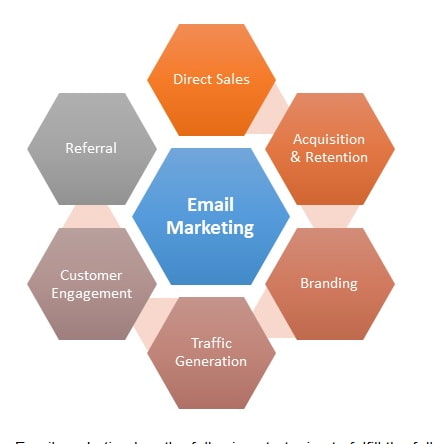
Key Components of a Good Email Campaign
Now, we would like to briefly list effective strategies for successful campaigns.
- Personalization with Segmentation: Instead of sending the same message to all subscribers, send special content by grouping them according to their interests, purchase history or geographic location. Approaches such as “Hello Ahmet, here is the perfect opportunity for you…” increase the opening and click-through rates.
- Automation Flows (Workflow): From welcome emails to birthday greetings, abandoned cart reminders to re-engagement flows, automations both save you time and allow you to reach the subscriber at the right time.
- A/B Tests: Test elements such as subject headings, sending times, button colors or opening texts with A/B tests. Even small changes can make significant differences in your click-through rates.
- Mobile Compatibility: Emails that more than 60% of your subscribers check from mobile devices should definitely be prepared with responsive design. Fast loading of images and easy-to-click CTAs strengthen the mobile experience.
Performance Measurement and Optimization
One of the most important issues in email marketing is measuring performance. Remember; you can’t manage what you can’t measure. This carries the risk of taking you and your sales to a very negative point. Now let’s briefly list the topics of performance measurement and optimization.
- Basic KPIs: Metrics such as open rate (Open Rate), click-through rate (Click-Through Rate), conversion rate (Conversion Rate) and unsubscribe rate (Unsubscribe Rate) clearly show the success of your campaign.
- Email Health Score: Sending delivery rate and spam complaint rates should also be taken into consideration. Lists that are not cleaned well lead to difficult deliveries and loss of reputation.
- Feedback Loop: Collect feedback from subscribers through user comments, surveys or short forms. Continuously improve your content and frequency strategy according to their requests.
- Continuous Improvement: Create regular performance reports. Model successful campaigns and analyze low-performing ones to optimize. Email marketing is a cyclical development process, not a one-time effort.
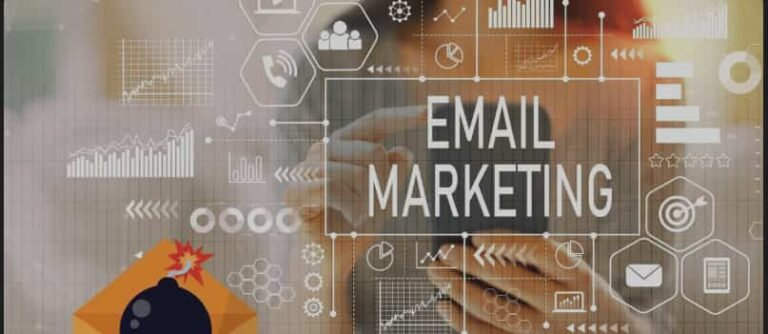
Successful Email Marketing Examples
You get the point, but you need examples to go deeper, right? Here are four examples of successful email marketing.
- Wellcome Emails: These are emails that are automatically sent when a user subscribes to your email list or interacts with your brand for the first time. The main purpose of these emails is to welcome the new subscriber or customer, introduce your brand, show them that you offer value, and usually offer an incentive (for example, a discount code) to take the next step. Welcome emails are very important because they create the first impression between the brand and the subscriber and lay the foundation for future interactions. They are usually sent as a series of welcome emails rather than a single email.
- Abandoned Cart Emails: These emails, which are vital for e-commerce sites, are sent when users add products to their shopping carts and leave the site without completing the purchase. The purpose of abandoned cart emails is to remind the user of the items in their cart, try to understand why they didn’t complete the purchase (via a survey or feedback request), and encourage them to return and finish the purchase. This incentive is often in the form of a limited-time discount or free shipping offer. These emails are very effective in regaining potentially lost sales.
- Campaign and Promotional Emails: These are emails sent to promote a specific product, service, discount, or special offer. The main goal of these emails is to encourage recipients to take a specific action (buy, sign up, etc.). Campaign emails usually include clear and eye-catching headlines, visually appealing designs, and strong calls to action. They are often used for special occasions like Black Friday, Valentine’s Day, or events like a new product launch.
- Newsletters: These are emails sent to your subscribers on a regular basis and usually contain a variety of content such as informational, educational content, industry news, summaries of your blog posts, new product announcements, or company updates. The main purpose of newsletters is to build brand loyalty, maintain interaction with subscribers, inform them and keep your brand top of mind, rather than making direct sales. They aim to increase your subscribers’ loyalty to your brand by providing valuable content.

Email Marketing, AI and the Future Trends
Email marketing is one of the digital marketing channels that provides the highest return on investment (ROI) in the long term when used correctly. Once you learn the cornerstones, you can continuously progress with strategy and optimization, establish strong bonds with your subscribers and achieve your business goals.
Remember; sincere language, personalized content and data-driven approaches will set you apart from your competitors. Be excited when sending your first email, see each campaign as a learning opportunity and embrace email marketing as a journey that requires continuity, not a marathon.
In short, email marketing is a powerful digital marketing tool that maintains its validity and effectiveness for businesses in the digital age. Its success depends on cornerstones such as a well-established subscriber list, targeted segmentation, providing personalized and valuable content, using clear and effective calls to action and continuous performance analysis.
With various formats from welcome emails to abandoned cart reminders, campaign announcements to informative newsletters, email marketing enables brands to communicate directly with their target audiences, establish relationships and achieve measurable business goals.
Investing in email marketing as an integral part of digital marketing strategies is critical for sustainable growth and customer loyalty in today’s competitive environment.
